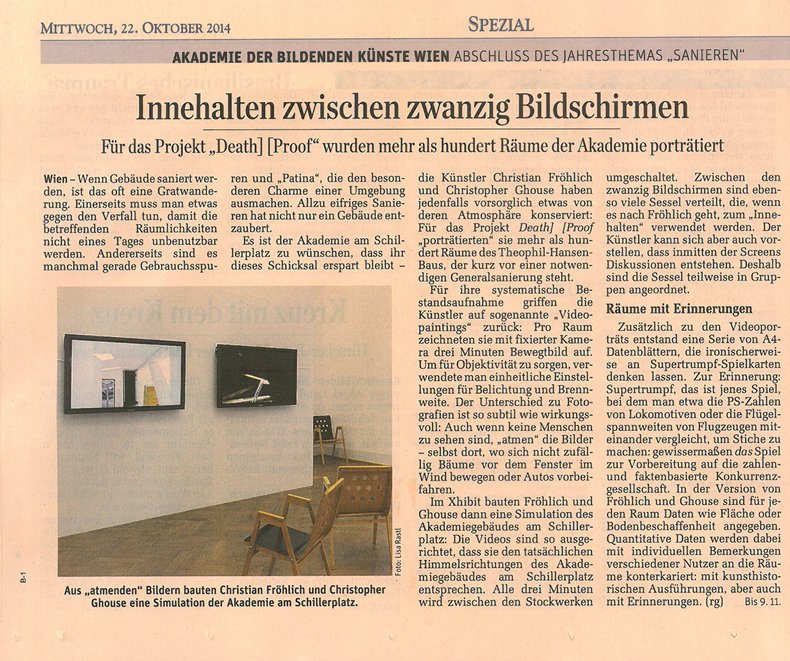
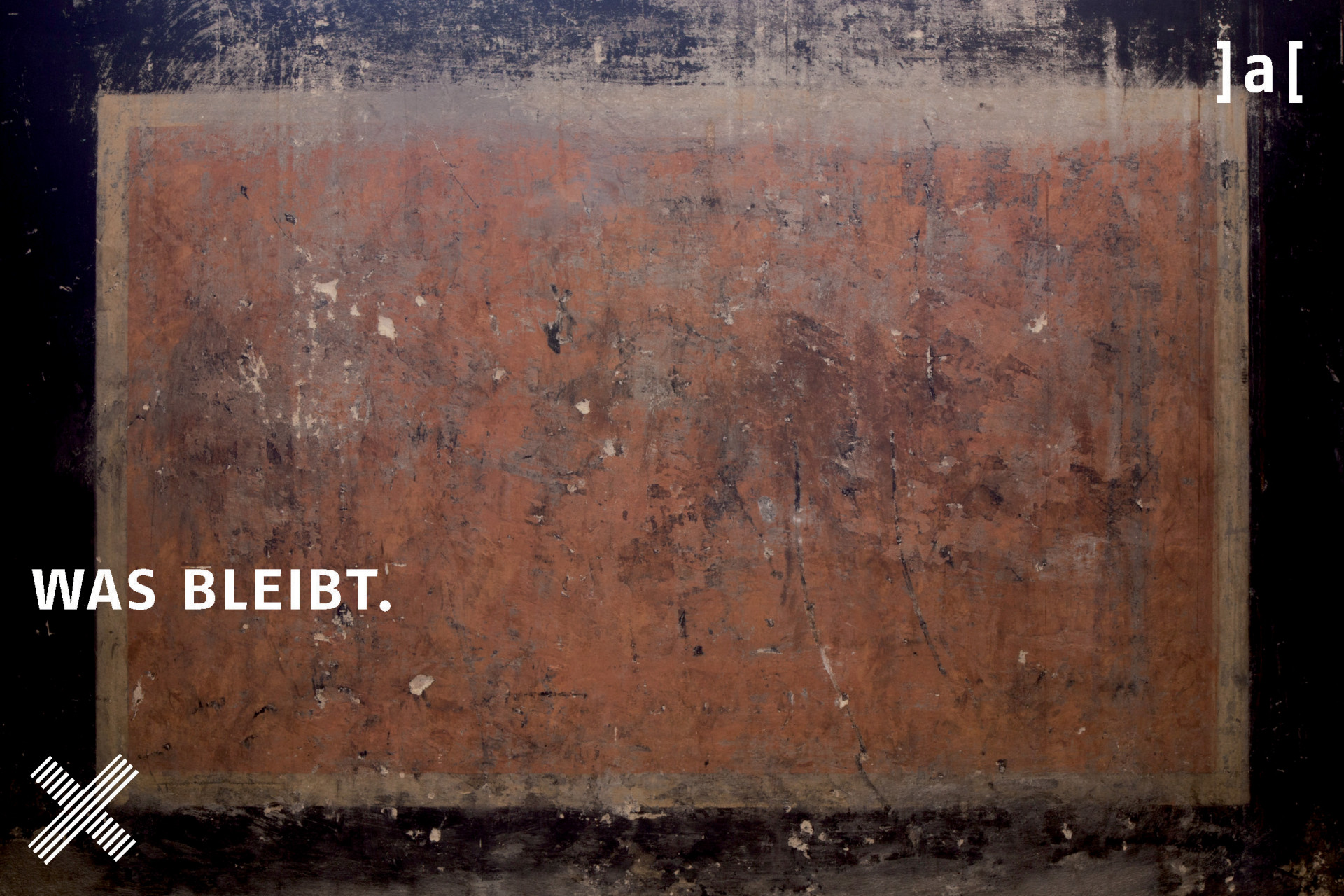
DEATH ] [ PROOF. Exhibition
A Project by
Christian Fröhlich
with Christopher Ghouse
kindly supported by: Martin Auer, Johanna Digruber, Helmut Hempel, Jochen Käferhaus, Claudia Koch, Ruth Lackner
]a[
XHIBIT
Opening | 07.10.2014, 7.00 p.m.
Exhibition dates | 08.10.2014 – 09.11.2014
Venue | Academy of Fine Arts Vienna, Main Buliding, Schillerplatz 3, 1010 Vienna, xhibit
WHAT REMAINS
Two different lines of sight intersect in the exhibition WHAT REMAINS: while documenting how use and aging processes inscribe themselves into a building on the one hand, the show also shifts the focus from the restored object to the conservation process as such. WHAT REMAINS maps an uncertain terrain and secures traces in the pivot of what is going on.
DEATH ] [ PROOF
Refurbishment. Conversion
Destroy. Renovate to death
During your visit of this exhibition the entire building of the Academy of Fine Arts Vienna finds itself in a kind of limbo before its pending refurbishment. Though preservation is a primary objective, there is always the risk of destroying or renovating something to death. The idiom “death-proof” describes the technical design of a machine protecting its users from losing their lives. Concerning architecture, the question that arises is how to refurbish a building without renovating it to death in terms of the culture of building becoming manifest in it? The experts’ answer is not an unequivocal one. The range of suggested solutions spans from restoring the patinated original state by “exposure” to simulating the past by applying new layers.
The project DEATH ] [ PROOF serves as a corrective and snapshot of the actual state here. The video portraits of the rooms of the Academy on Schillerplatz offer the unique opportunity to pause and observe how the house presents itself before its renovation starts. Camera and video medium help us to have a closer look. Details, surfaces, materials, ruinous parts, patina … valuable and cherished things, the feasible and the strange, which the human eye usually just glides across, are made visible by the camera eye in capturing them.
One thing is already clear, without wanting to make a judgment: Hansen’s building will never be seen again as it is presented in the exhibition DEATH ] [ PROOF.
Raumbuch.
Erdgeschoß, Schillerplatz, Akademie der bildenden Künste Wien
Click on the button to load the content from issuu.com.
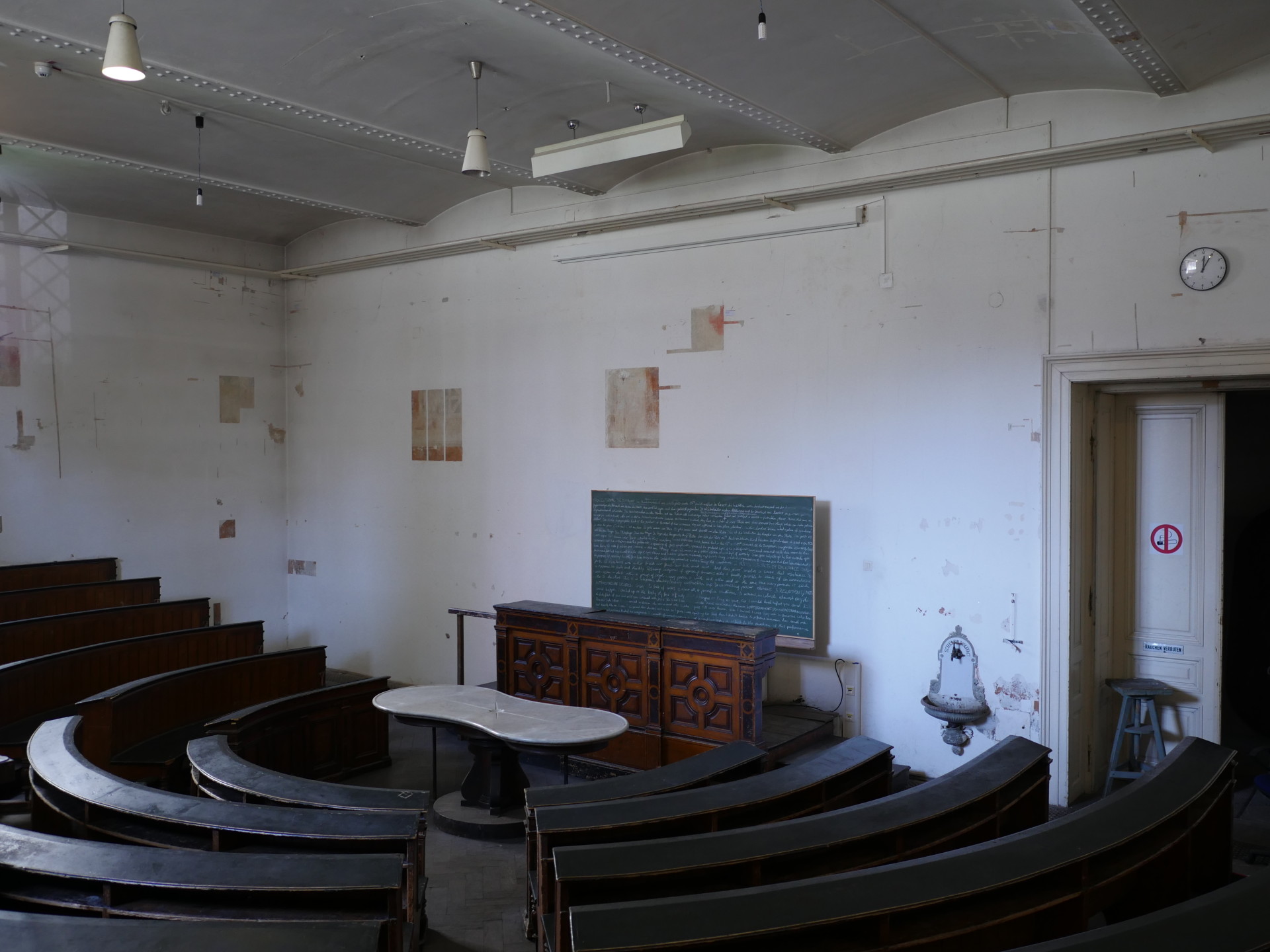
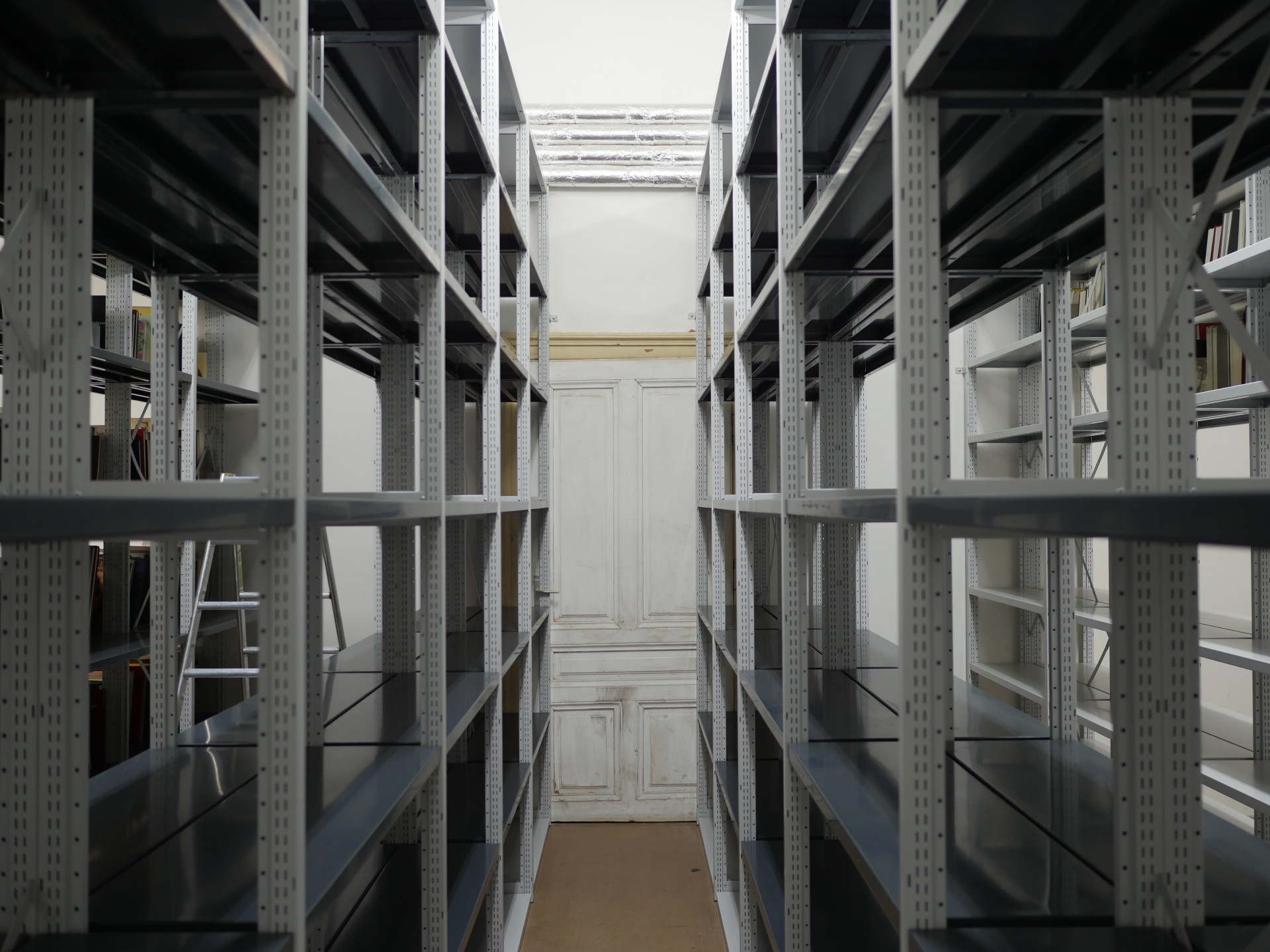
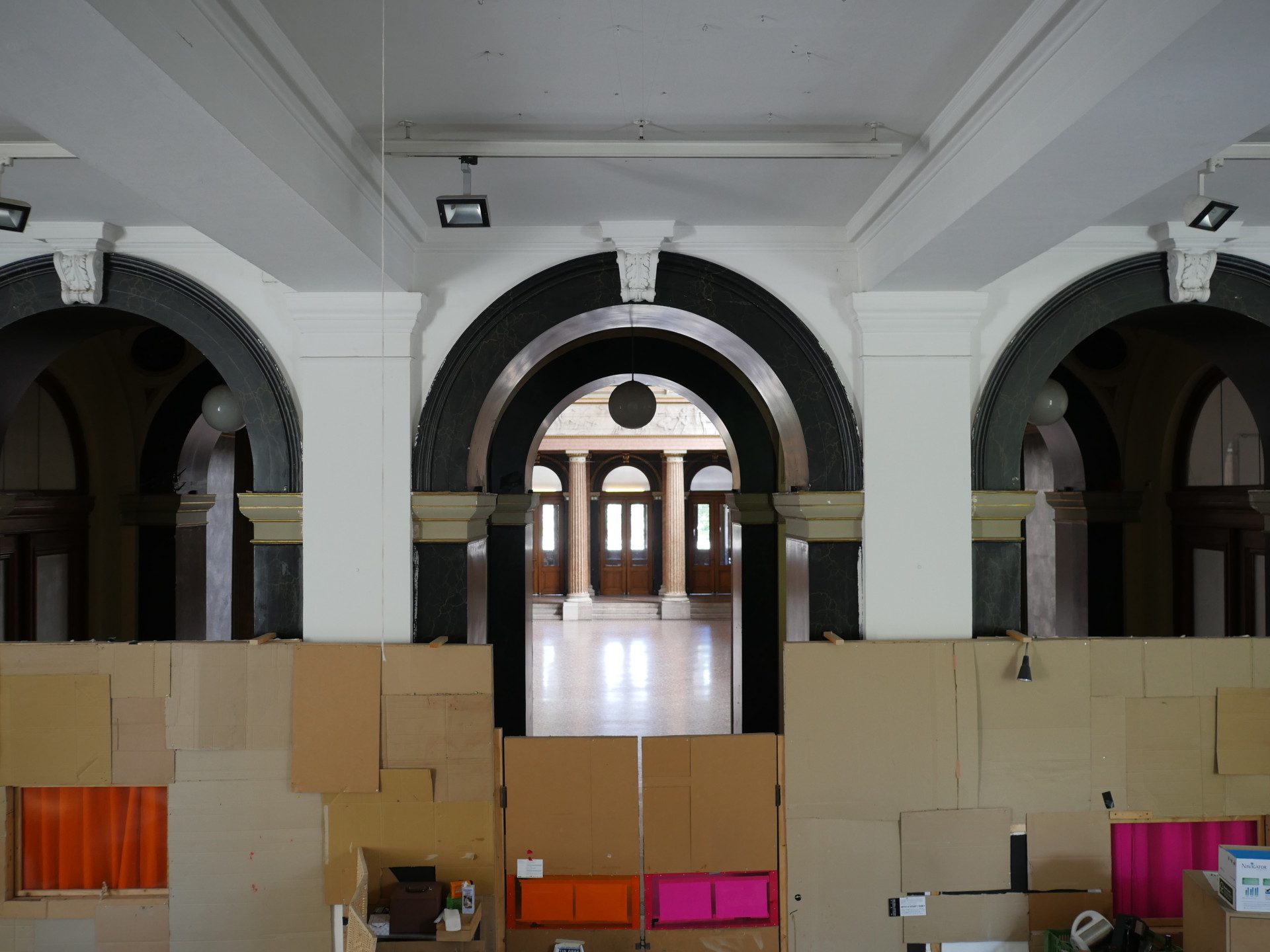
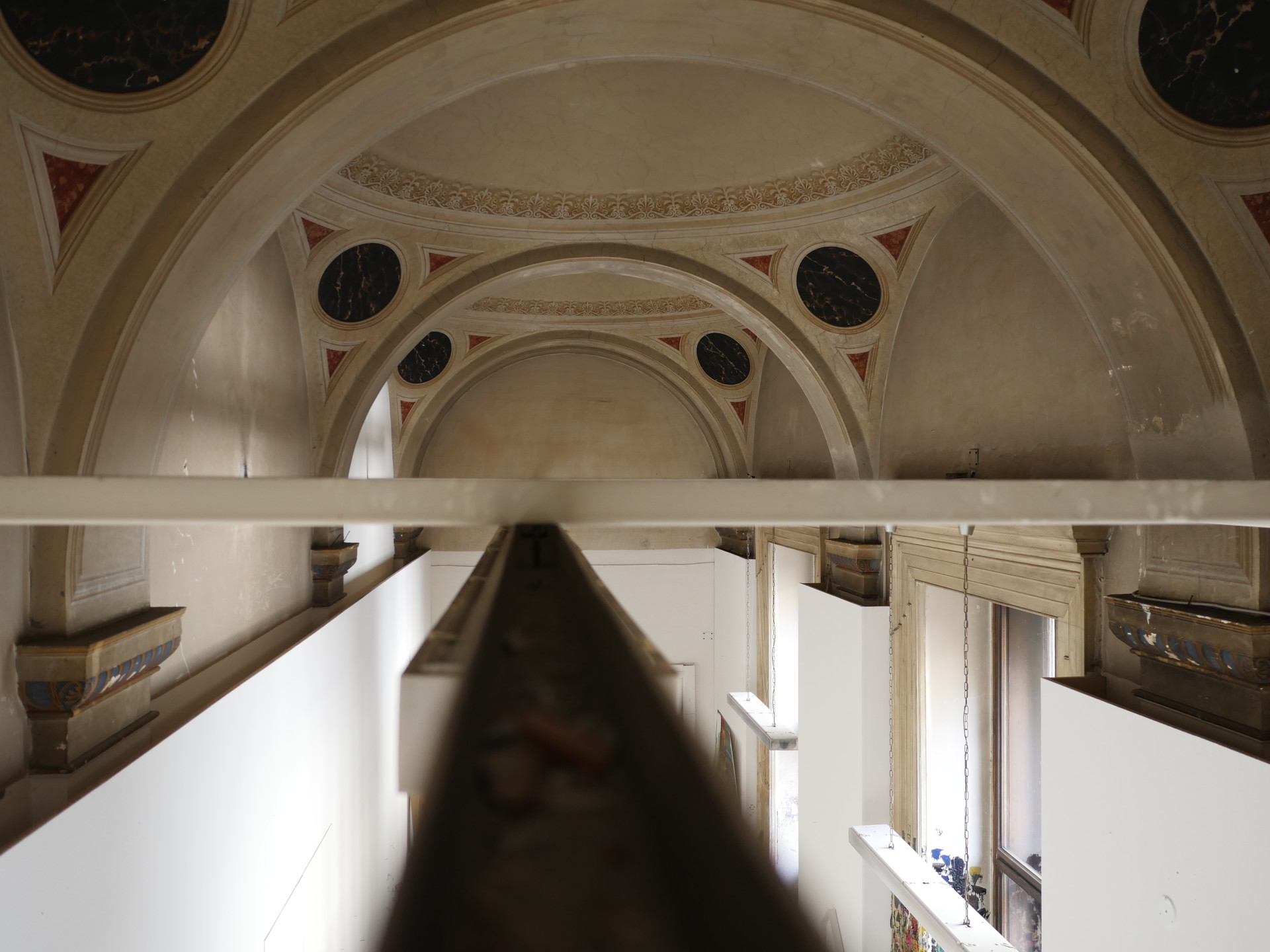
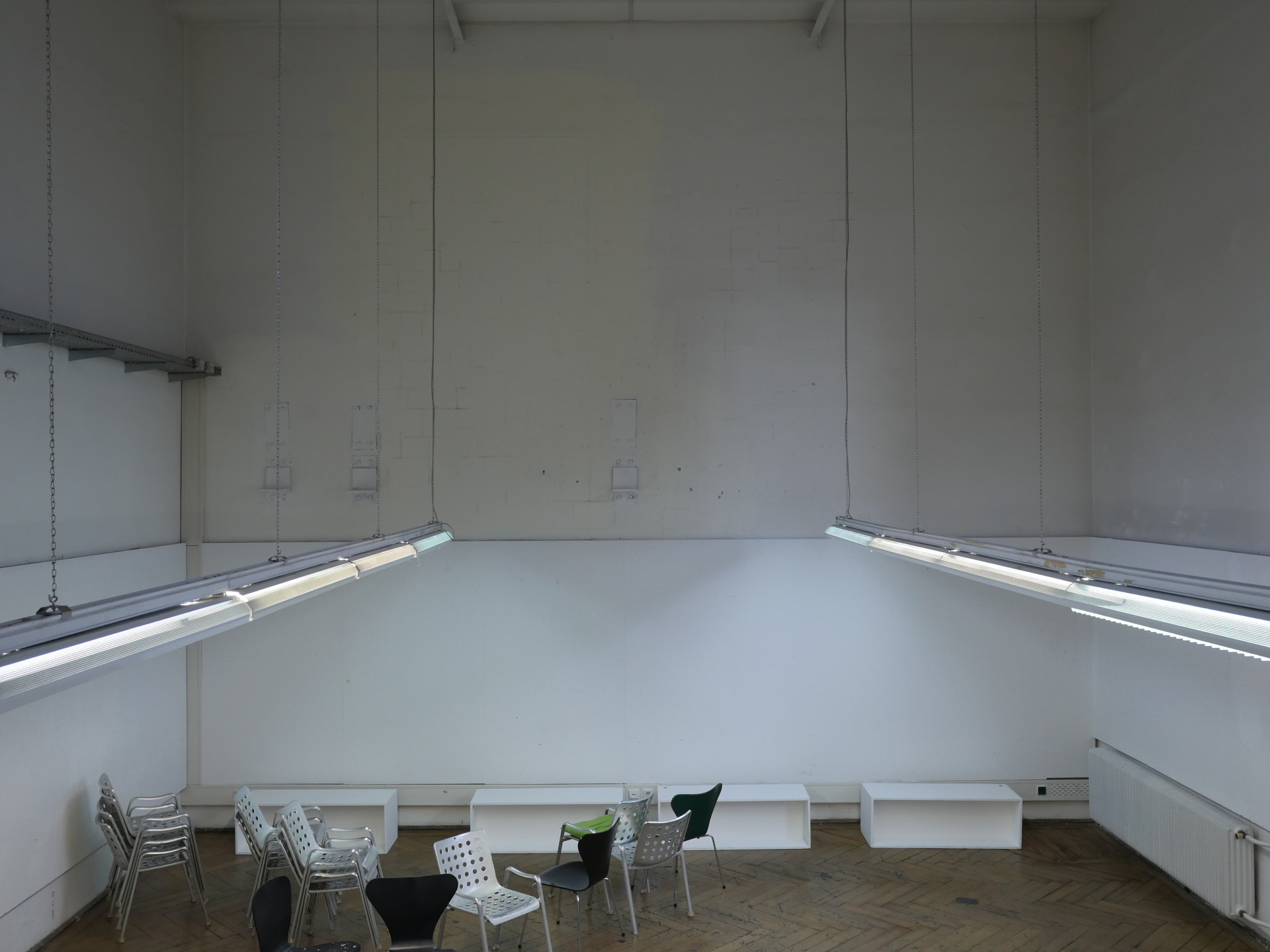
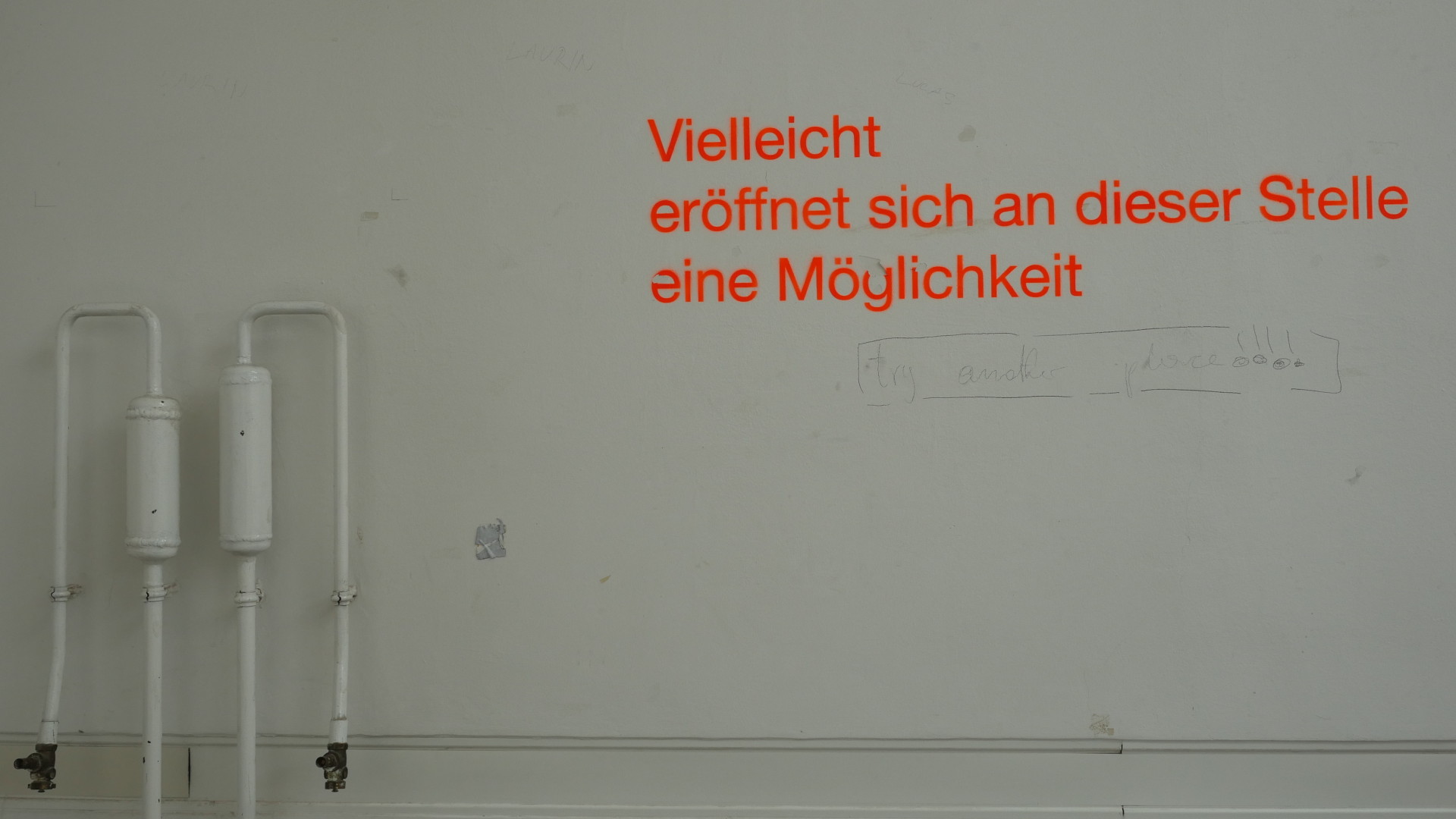
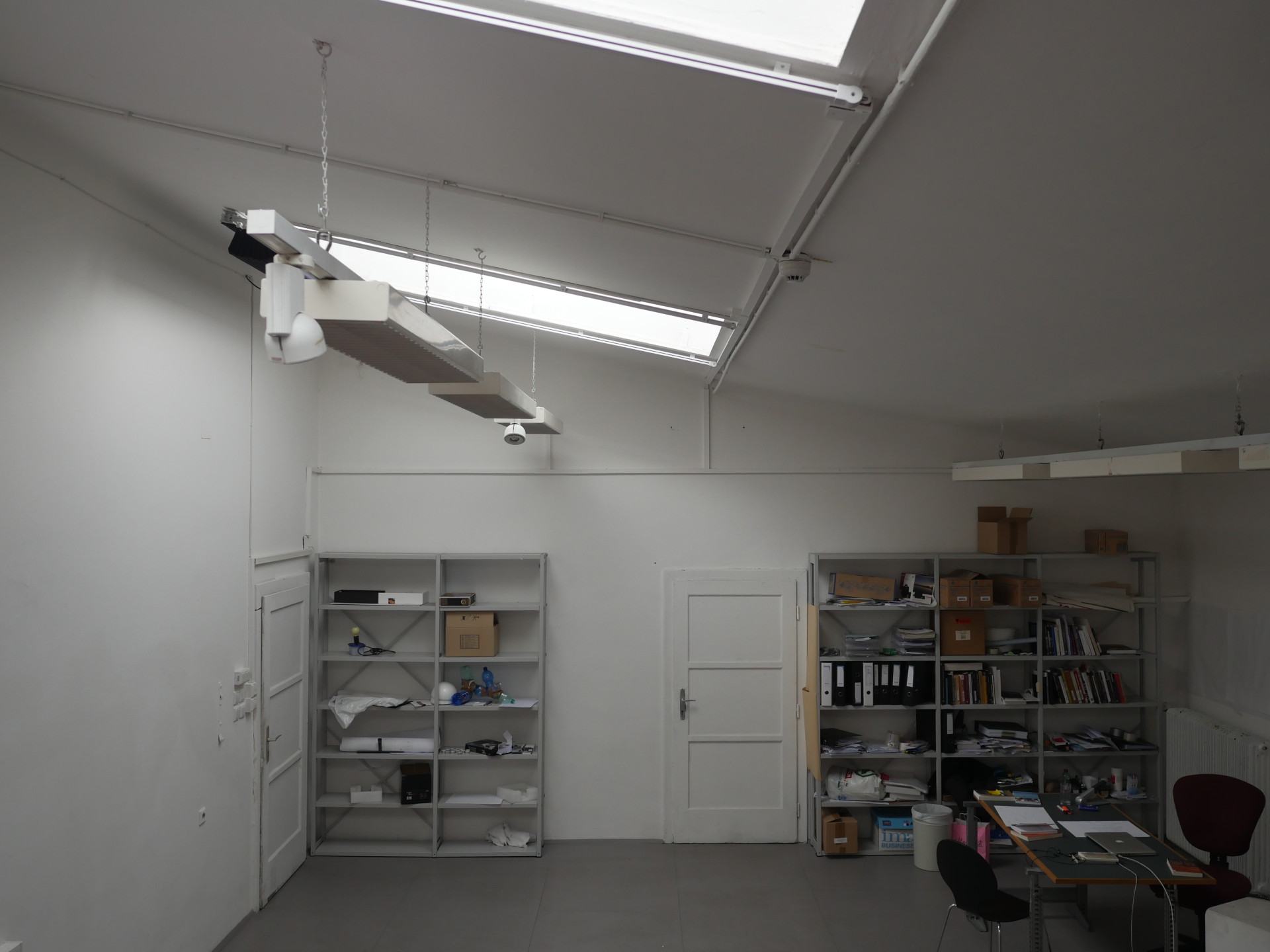
Video Paintings
For an authentic look please activate all four videos in succession. They represent four spaces on four (out of nine) floors that are superimposed: (in order of appearance)
D4_South rooftop | DG06/T2_Labor-Chemie attic storey | 1A1_Bosch-Saal 1st floor | S05a_Aktsaal Souterrain
—
Video Paintings
Für einen authentischen Eindruck aktivieren Sie bitte alle vier Videos hintereinander. Sie repräsentieren vier Räume auf vier (von insgesamt neun) Geschossen, die übereinander liegen: (in Reihenfolge ihres Erscheinens)
D4_Süd Dachfläche | DG06/T2_Labor-Chemie Dachgeschoss | 1A1_Bosch-Saal 1. Stock | S05a_Aktsaal Souterrain
D4_Süd
]a[ akademie der bildenden künste wien
Blick von den Dächern der Akademie über den Innenhof auf die Wienerberg City.
DG06/T2_Labor-Chemie ]a[ akademie der bildenden künste wien
Mehrzweckraum für Mikroskopie, Vorlesungen und Laborübungen für Studierende. Es gibt nur Dachfenster, die bei Regen nicht automatisch schließen.
1A1_Bosch-Saal ]a[ akademie der bildenden künste wien
Der Blick aus der knapp unter der Raumdecke eingezogenen technischen Ebene verleiht den architektonischen Elementen Dominanz gegenüber den Gemälden. Das Weltgerichtstriptychon des Hieronymus Bosch, das hier aus einer für den Besucher unerreichbaren Position zu sehen ist, ist das berühmteste Werk der Sammlung und gibt dem Galerieraum seinen Namen: Bosch-Saal. (Claudia Koch)
S05a_Aktsaal ]a[ akademie der bildenden künste wien
Anatomiesaal und gegenüberliegend hier der Aktsaal waren für Theophil Hansen Symbole einer anthropozentrischen Weltsicht und damit morphologische Bauteile des Bauwerks. Sie bilden stellvertretend für Tod und Leben die Basis jeder künstlerischen Tätigkeit. Im Untergeschoss positioniert, tragen sie, als Teile des Fundaments, das Bauwerk insgesamt. (Helmut Hempel)


